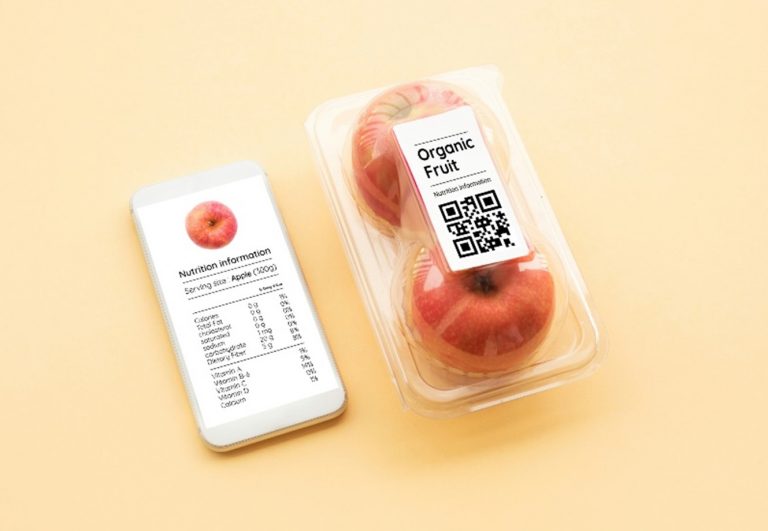About 2D barcodes
The demand for product information is growing rapidly. Businesses, public authorities, and consumers are increasingly seeking more detailed information about the products they buy, sell, or use. However, the information available on packaging and labels is limited. That is why the retail industry has set a global ambition: by the end of 2027, point-of-sale (POS) systems should be capable of reading 2D barcodes powered by GS1 – in addition to today’s linear barcodes.
Retailers have identified 2D barcodes powered by GS1 as the solution. These codes can be scanned both at the checkout and by smartphones – unlocking capabilities far beyond what traditional barcodes can offer. Brand owners will be able to link a product’s unique GTIN (Global Trade Item Number) to a wealth of personalised information accessible via the packaging. Retailers, in turn, can easily retrieve this data by upgrading their POS systems.
The global transition to 2D barcode scanning at the POS is already underway. Brand owners should therefore begin implementing the most suitable type of 2D code now, to support their key use cases and business needs.

QR code with GS1 Digital Link syntax
-
Takes up little space on the packaging
-
Can be scanned by the consumer with a mobile phone
-
Connects to the web

GS1 DataMatrix
-
Takes up little space on the packaging
-
Requires an app to be scanned with a mobile phone

Data Matrix with GS1 Digital Link syntax
-
Takes up little space on the packaging
-
Requires an app to be scanned with a mobile phone
-
Connects to the web
Benefits of 2D barcodes
Inventory management
Traceability
Safety
Sustainability
Consumer engagement
Improved packaging
Resource Library
Read about industry initiatives, work and case studies from the retail and grocery sectors.
Standards and implementation guides
Here you will find shortcuts to standards, specifications and open source code for implementation.

Frequently asked questions
A global 2D program
A global shift is underway, with brand owners and retailers working together to label packaging with barcodes and 2D barcodes. The initiative to move to the next generation barcodes comes from industry-leading global players and covers all retail and FMCG product categories, including variable weight goods.











